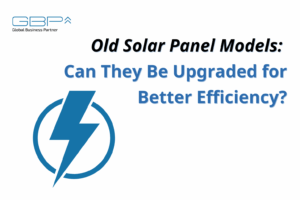Old Solar Panel Models: Can They Be Upgraded for Better Efficiency?
01 The Problem with Aging Solar Panels
Most solar panels are designed to last between 25 to 30 years, but their performance naturally declines over time.
Solar panels lose about 0.5% to 1% of efficiency per year, depending on quality and environmental conditions.
That means a 15-year-old system may now be operating at only 85% of its original efficiency, resulting in lower energy output and longer payback times.
02 What Can Be Upgraded?
Upgrading does not always mean replacing every panel. Depending on your system’s condition, several components can be enhanced individually:
Inverters –
Upgrading from a traditional string inverter to a smart inverter can significantly improve system performance. Smart inverters allow for better monitoring, automatic voltage regulation, and grid compatibility.
Cabling and Junction Boxes –
Older connection systems may cause power losses. Newer DC combiner boxes and MC4 connectors can minimize voltage drop and ensure more stable current flow.
Mounting Systems –
Replacing aging mounts with corrosion-resistant or adjustable tilt systems can improve energy capture and reduce long-term maintenance.
Solar Modules (Partial Upgrade) –
It’s possible to integrate newer, high-efficiency modules into an existing array — but this must be done with compatible voltage and current ratings. Always consult a certified solar engineer before mixing different models.
03 When Full Replacement Makes More Sense
If your solar panels are over 20 years old, suffer from visible degradation, or use outdated inverter technology, replacing the system might be more cost-effective in the long term.
Modern panels offer:
Higher conversion efficiency (up to 23%)
Improved performance in low light conditions
Smarter system monitoring
Additionally, new panels are designed to comply with stricter international standards for recyclability and environmental safety.
04 Environmental Benefits of Upgrading
Replacing or upgrading old solar systems is not just about boosting output — it’s also about reducing e-waste and enhancing sustainability. Many regions now encourage solar panel recycling programs to recover valuable materials like silicon and aluminum.
By upgrading your system instead of discarding it prematurely, you contribute to the circular economy of renewables and extend the life of existing components.
05 GBP’s Role in Sustainable Solar Upgrades
At GBP K.K., we’re committed to supporting Japan’s and Asia-Pacific’s transition to renewable energy through repowering and upgrading solutions.
Our technical team provides end-to-end support — from system inspection and component sourcing to customized retrofit solutions for both residential and commercial PV systems.

